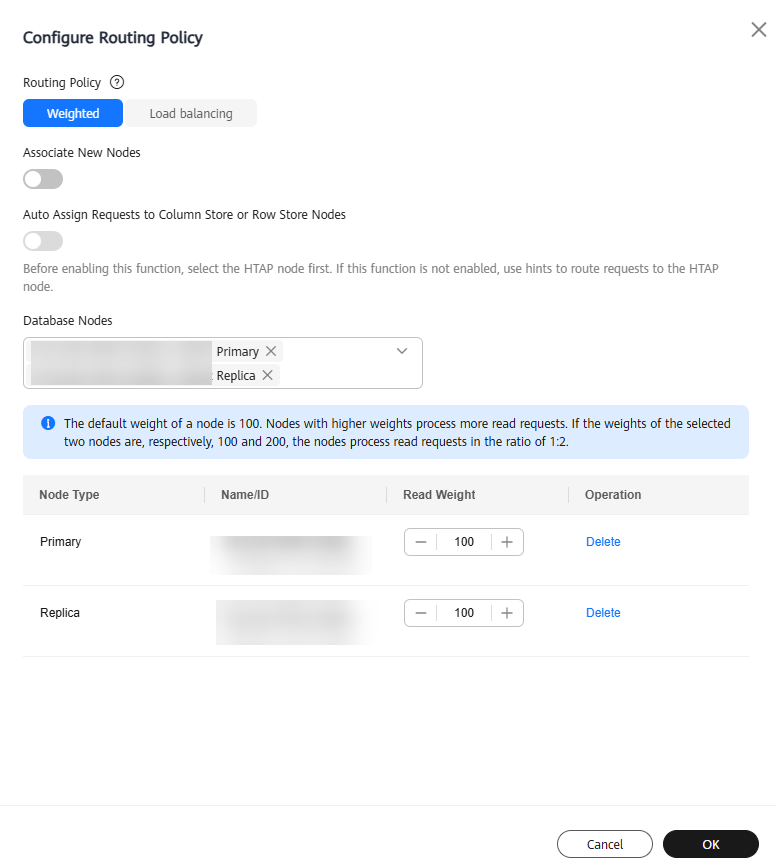Changing the Routing Policy of a Proxy Instance
You can configure the routing policy when creating a proxy instance. The default routing policy is weighted. You can also change the routing policy of an existing instance.
Working Principles of the Routing Policy
There are weighted and load balancing routing policies.
- Weighted: Read requests are assigned to nodes based on the weights you specify.
- Load balancing: Read requests are assigned to nodes with fewer active connections. In the load balancing policy, you do not need to configure the weights of nodes.

Example:
As shown in the preceding figure, a TaurusDB instance contains one primary node and four read replicas.
For the database proxy instance 1, the routing policy is weighted and the selected nodes include the primary node, read replica R1, and read replica R2, with their read weight ratio of 0:70:80. The write requests of the Application A are automatically forwarded to the primary node through the proxy instance, and the read requests are routed to read replicas R1 and R2 in the ratio of 7:8.
For the database proxy instance 2, the routing policy is load balancing and the selected nodes include the primary node, read replica R3, and read replica R4. The proxy instance determines the node to which the read requests are forwarded based on the number of real-time active connections.
When there are many active connections in read replica R4, the proxy instance forwards most read requests to read replica R3 and the primary node to offload the pressure of read replica R4.
Constraints
To use the load balancing policy, the kernel versions of proxy instances must be 2.22.07.000 or later. To upgrade a kernel version, see Upgrading the Kernel Version of a Proxy Instance. For details about how to check the kernel version, see How Can I Check the Version of a TaurusDB Instance?
Procedure
- Log in to the TaurusDB console.
- On the Instances page, click the instance name.
- In the navigation pane, choose Database Proxy.
- Click the name of a proxy instance.
- On the Basic Information page, click Configure under Routing Policy.
- In the displayed dialog box, configure required parameters.
Figure 2 Changing the routing policy of a proxy instance

Table 1 Parameter description Parameter
Description
Routing Policy
- Weighted: Read requests are assigned to nodes based on the weights you specify.
- Load balancing: Read requests are assigned to nodes with fewer active connections. In the load balancing policy, you do not need to configure the weights of nodes.
Associate New Nodes
After this function is enabled, new read replicas will be automatically associated with the current proxy instance.
If Routing Policy is Weighted, you need to configure read weights for the new nodes. The default weight of a node is 100. Nodes with higher weights process more read requests.
Database Nodes
The proxy mode of a proxy instance determines which nodes read requests are assigned to.
- Read-only mode: All read requests are assigned to the selected, but not to the primary node.
- Read/write mode: All read requests are assigned to the selected nodes (including the primary node and read replicas) based on the routing policy.
- Click OK. The proxy instance status changes to Configure routing policy.
- After several minutes, check that the proxy instance status becomes Available and the routing policy is updated.
Feedback
Was this page helpful?
Provide feedbackThank you very much for your feedback. We will continue working to improve the documentation.See the reply and handling status in My Cloud VOC.
For any further questions, feel free to contact us through the chatbot.
Chatbot





